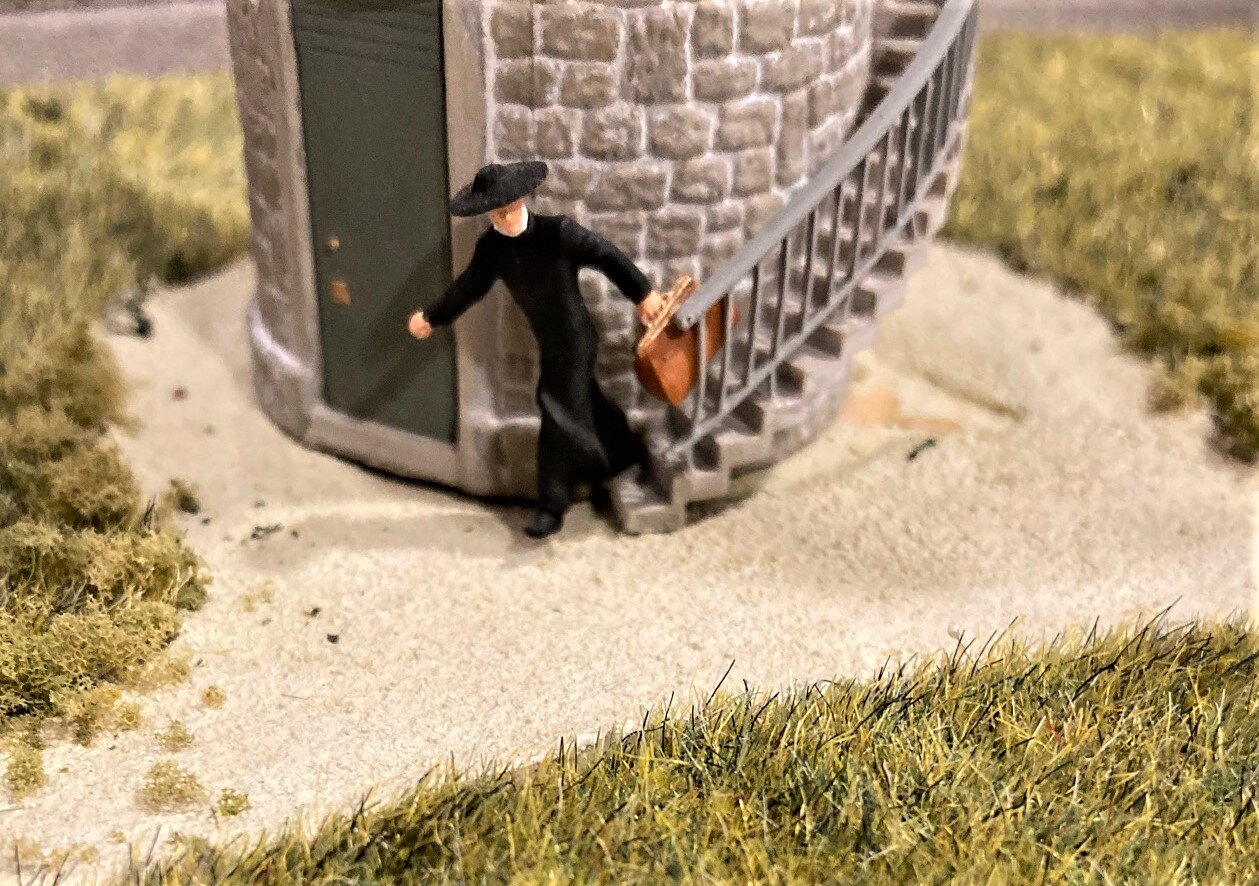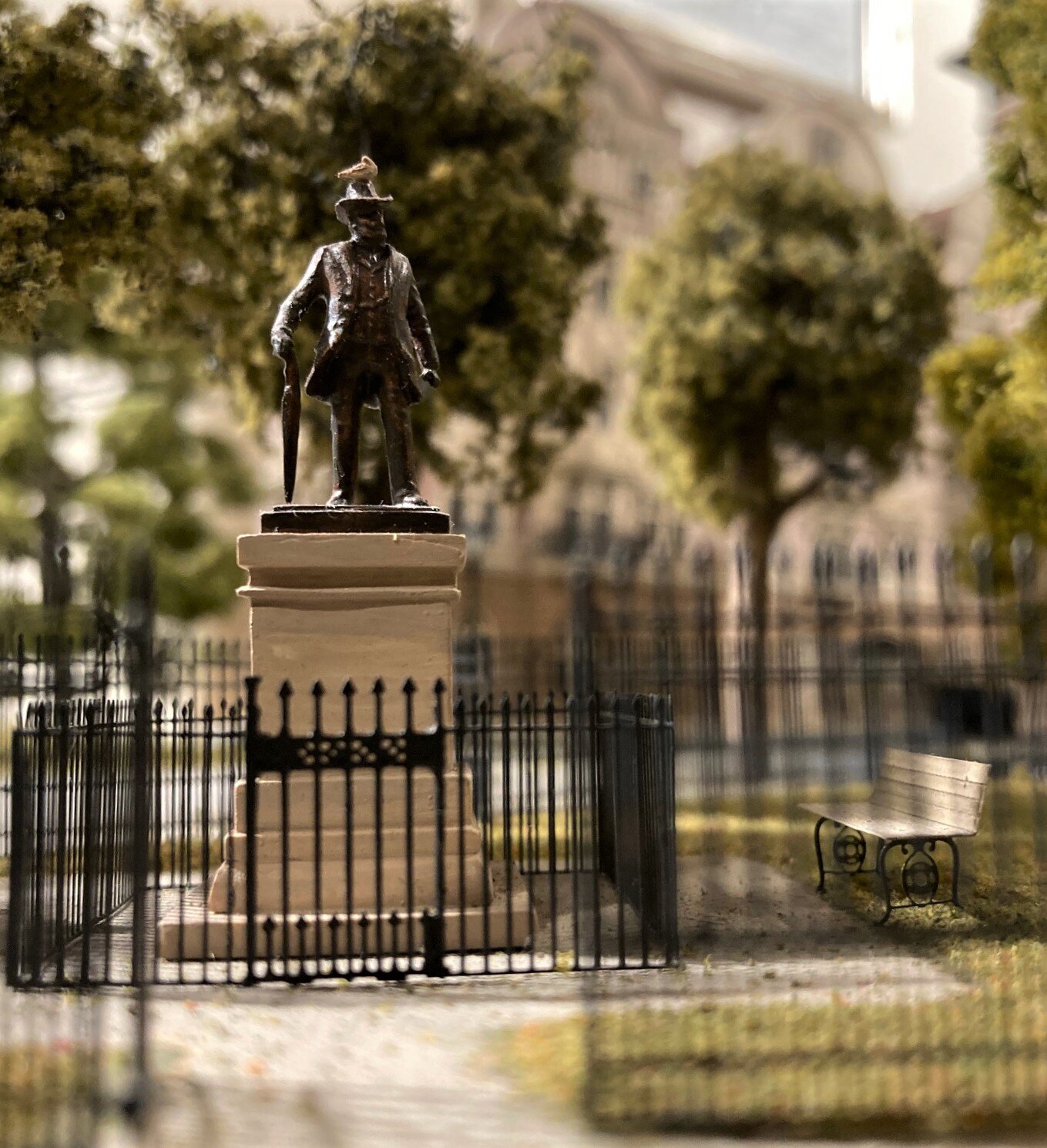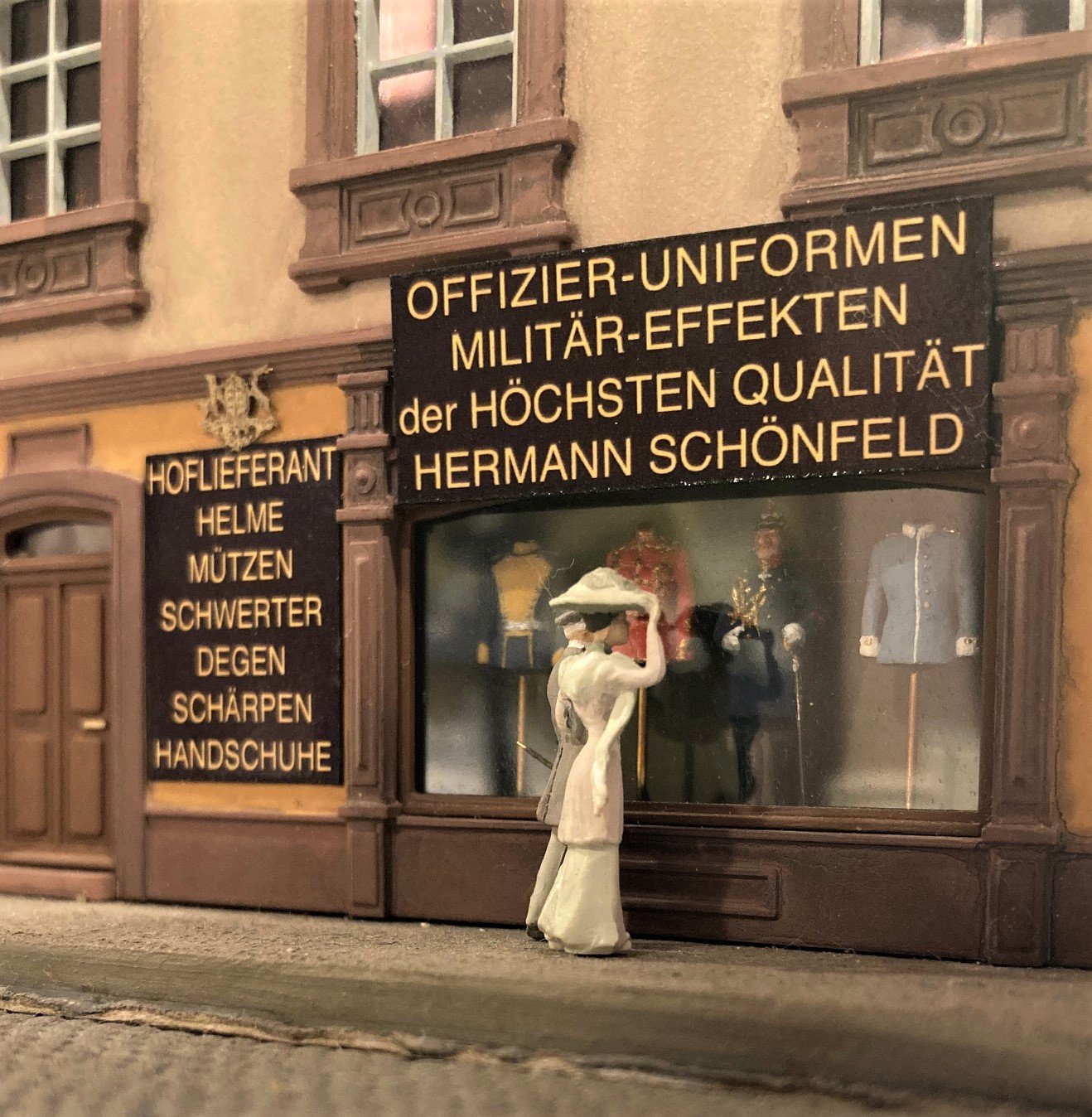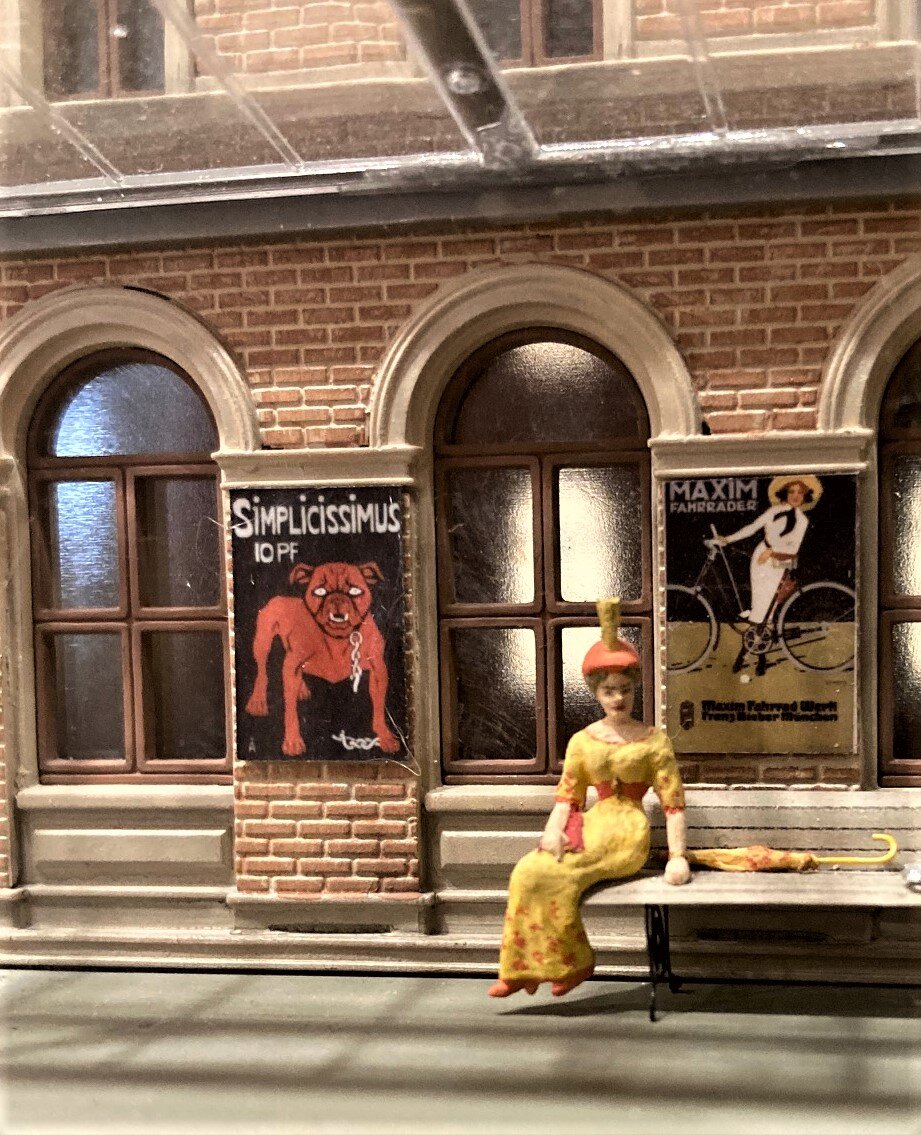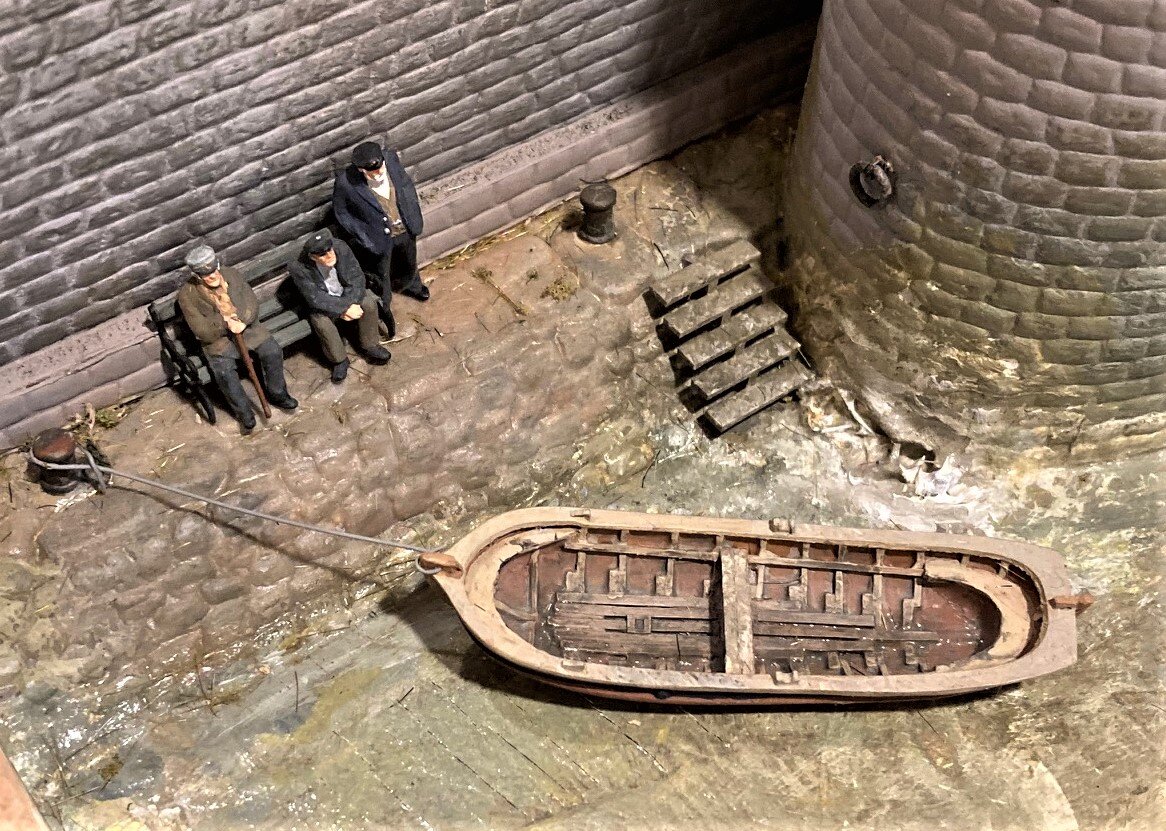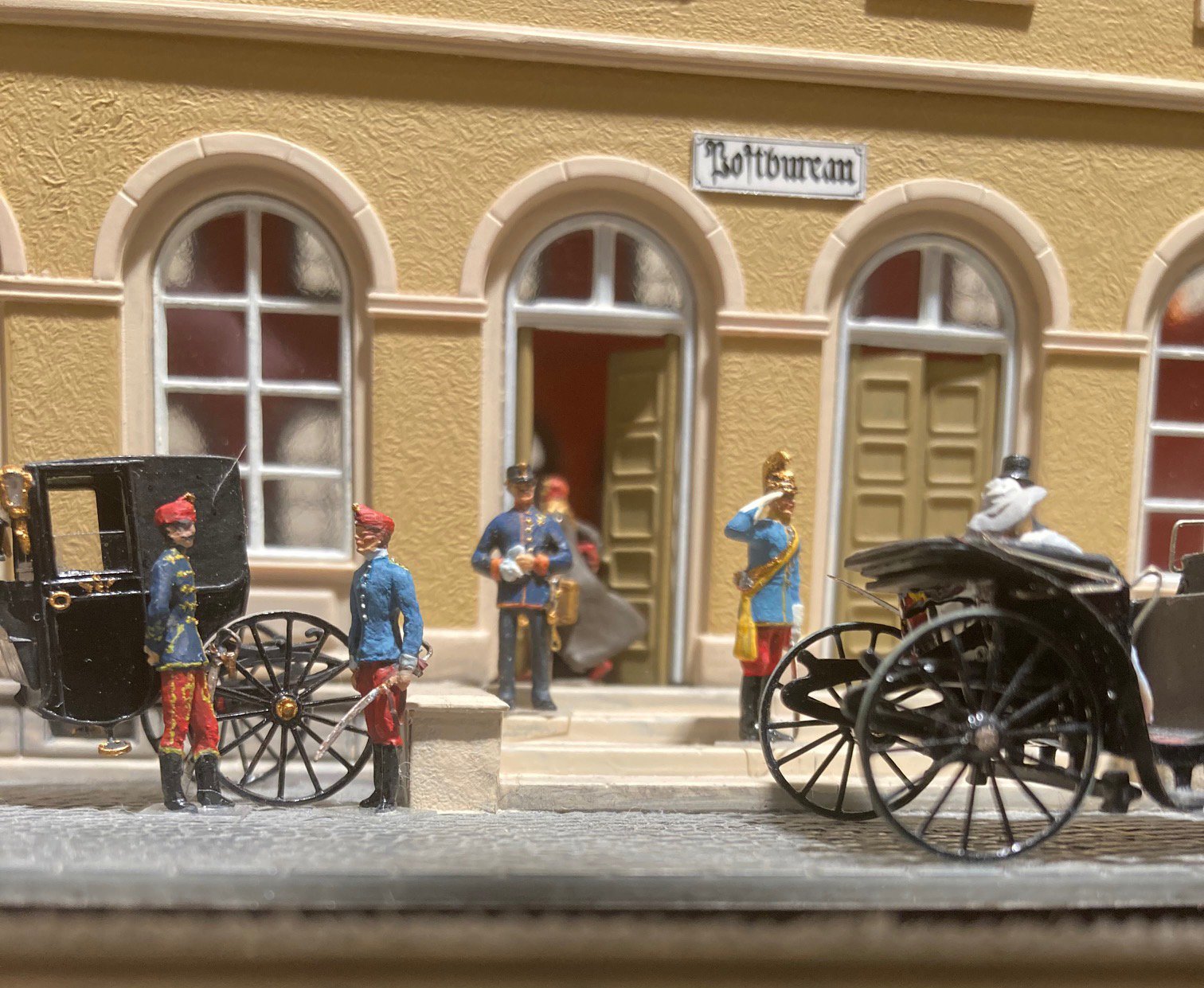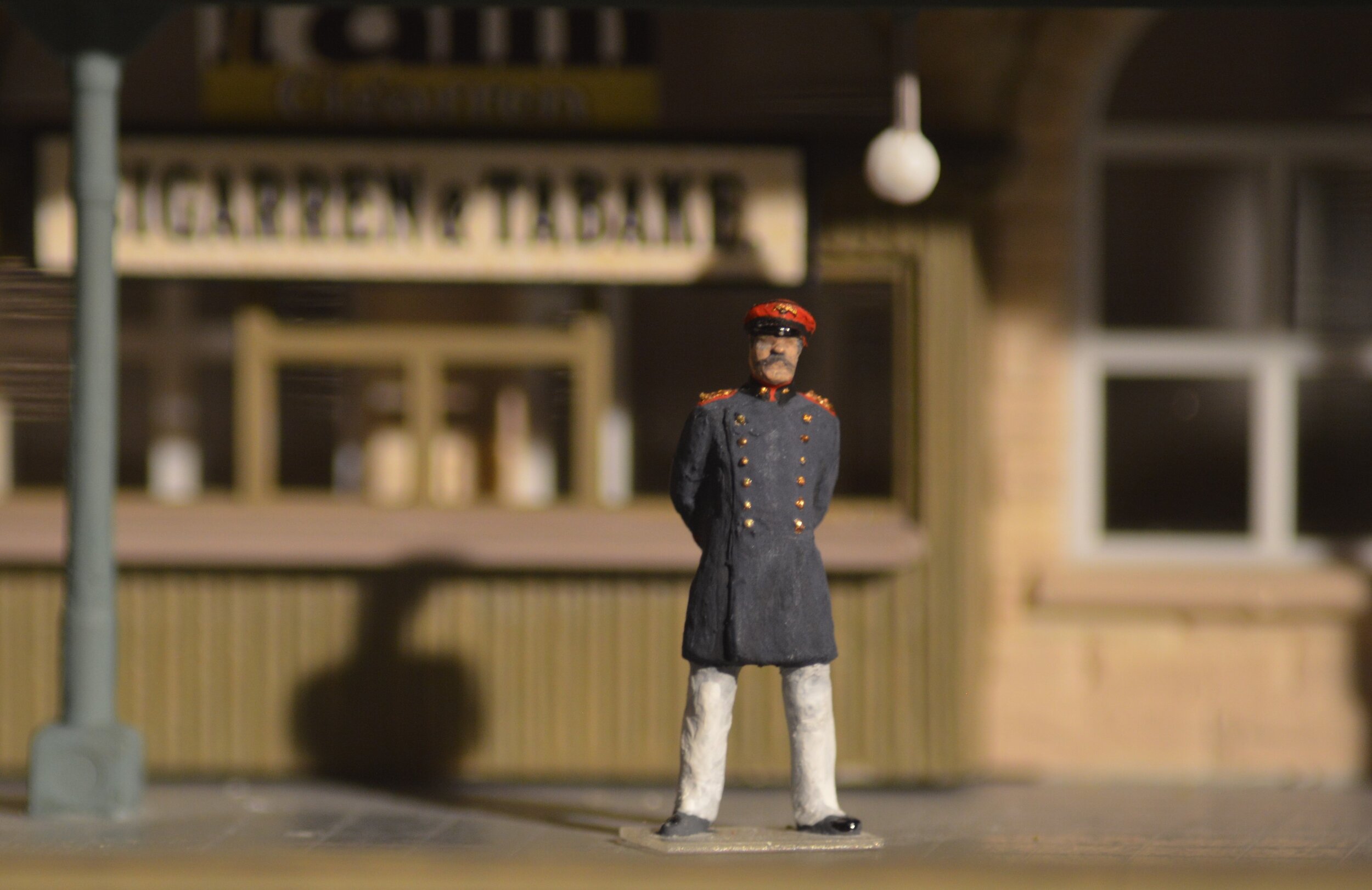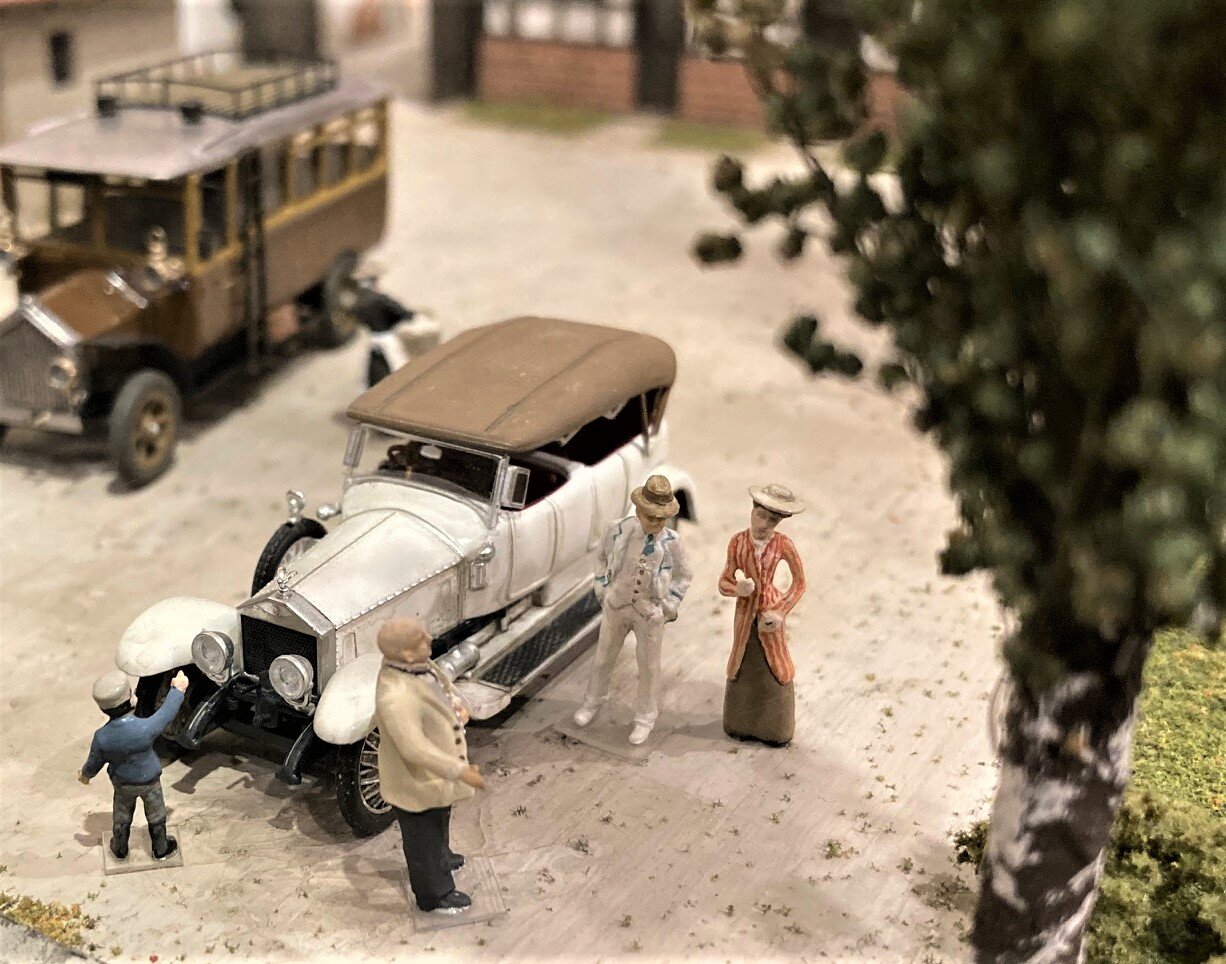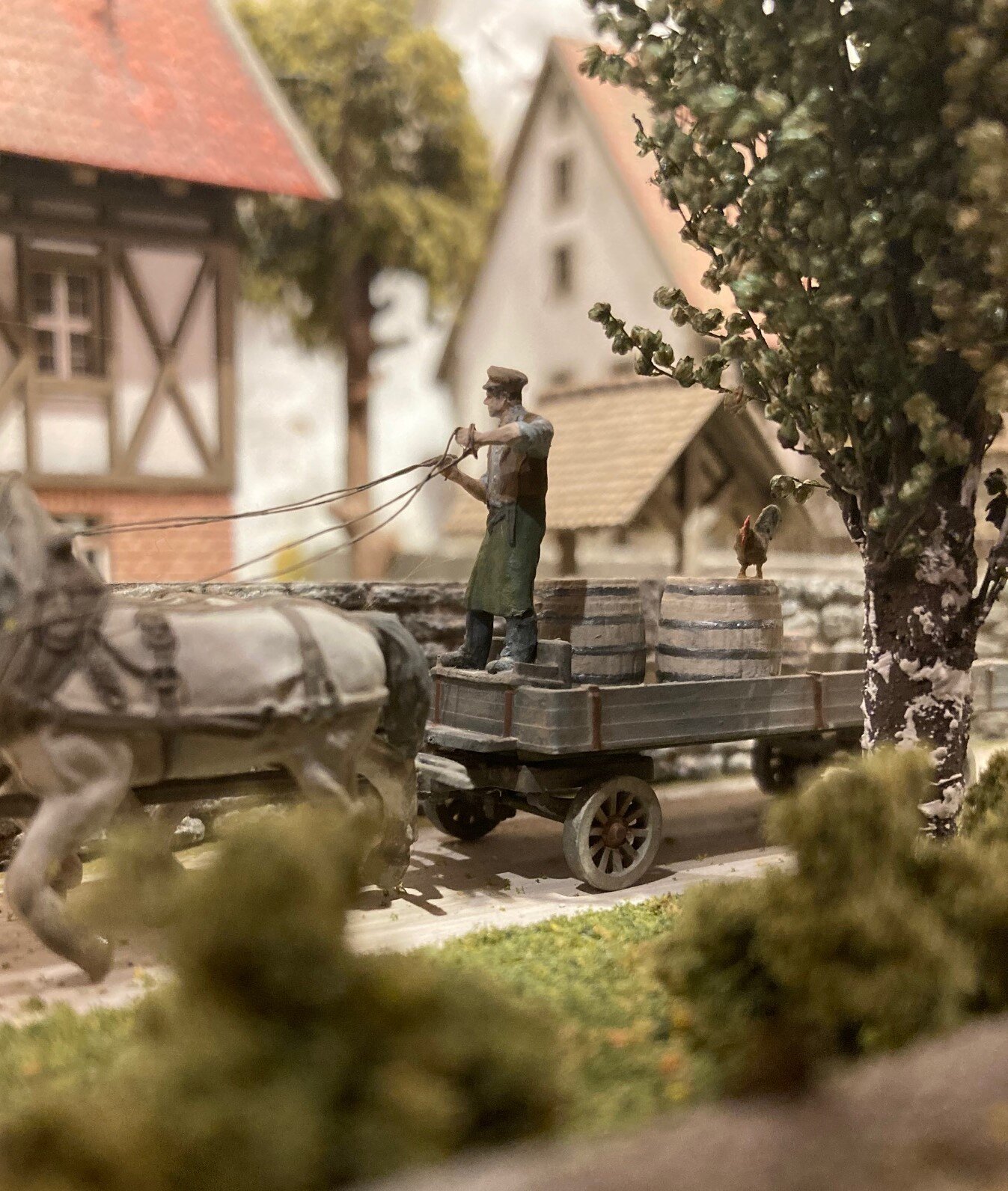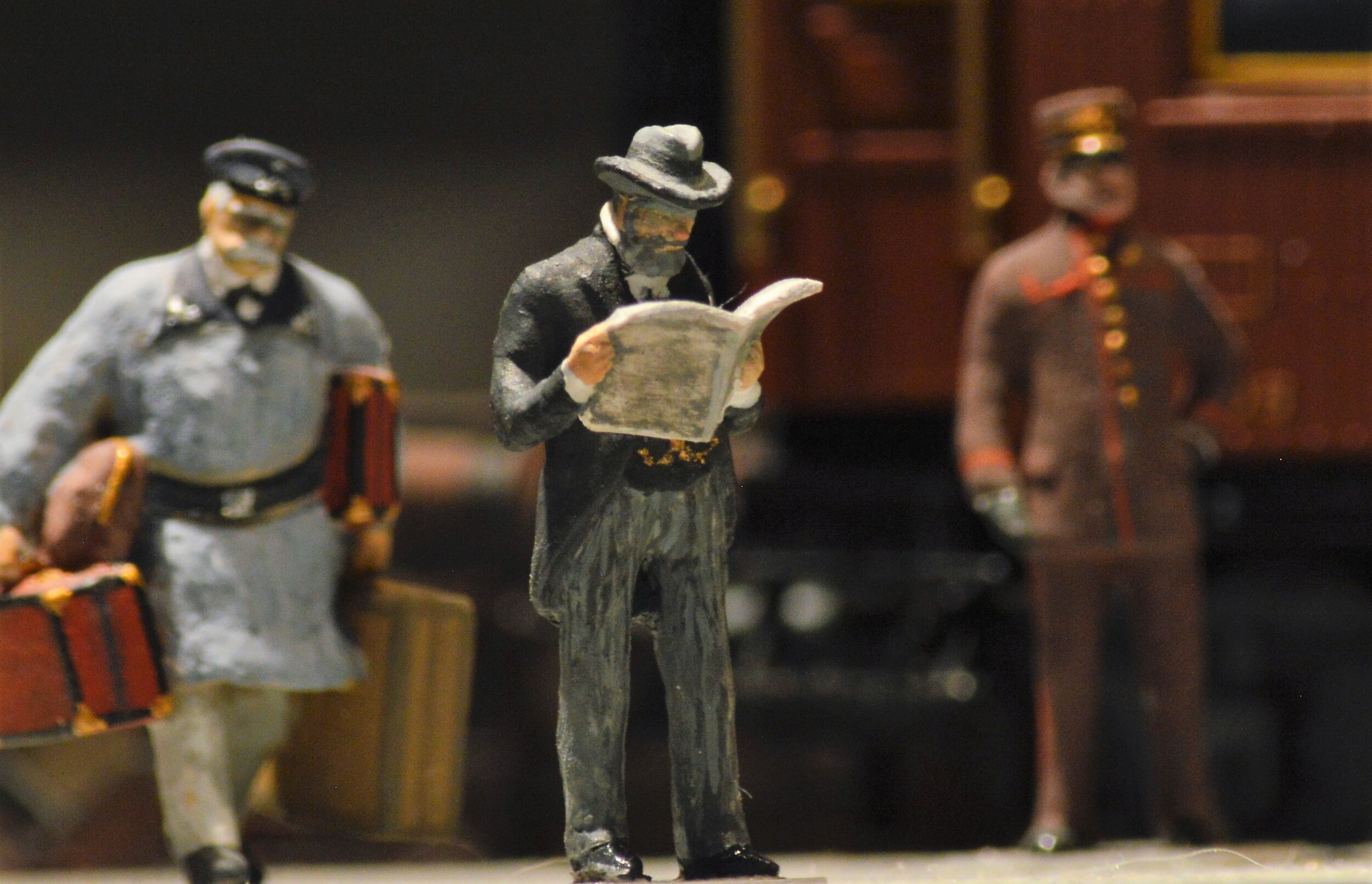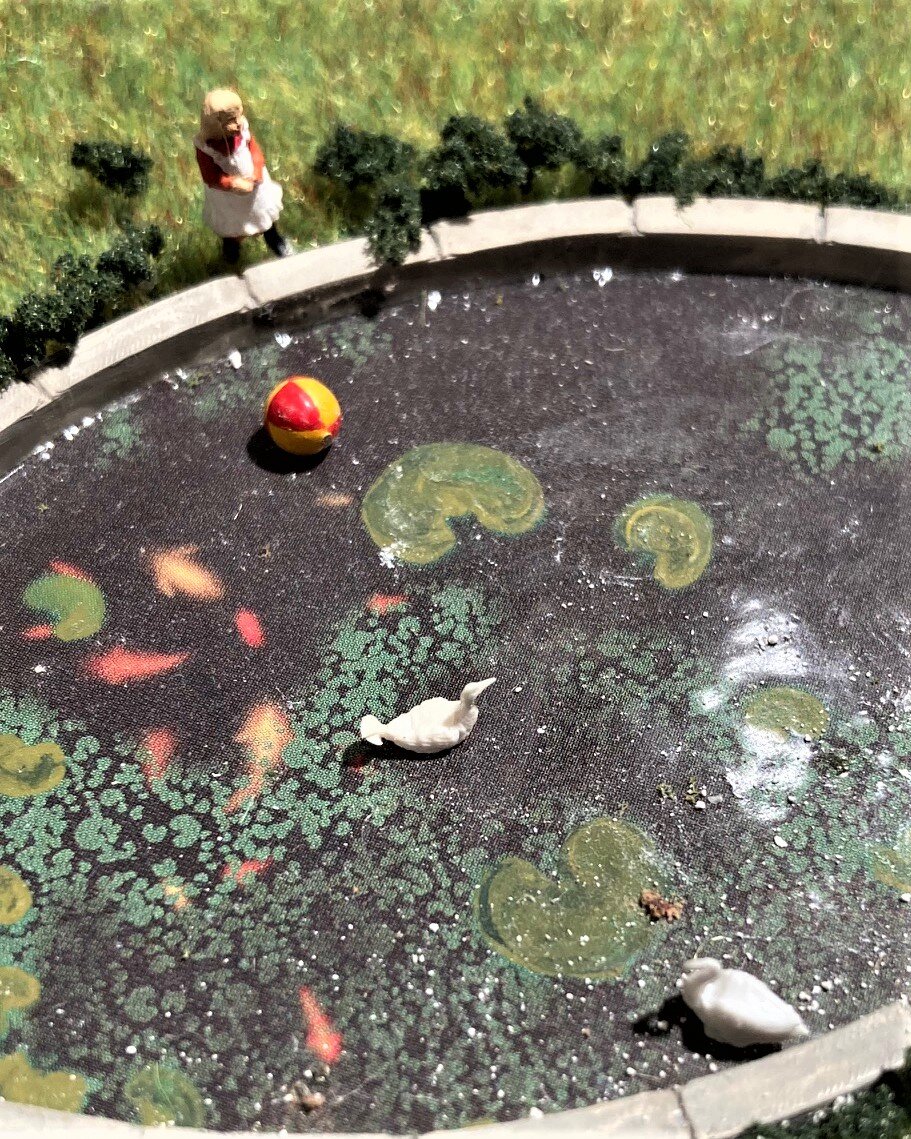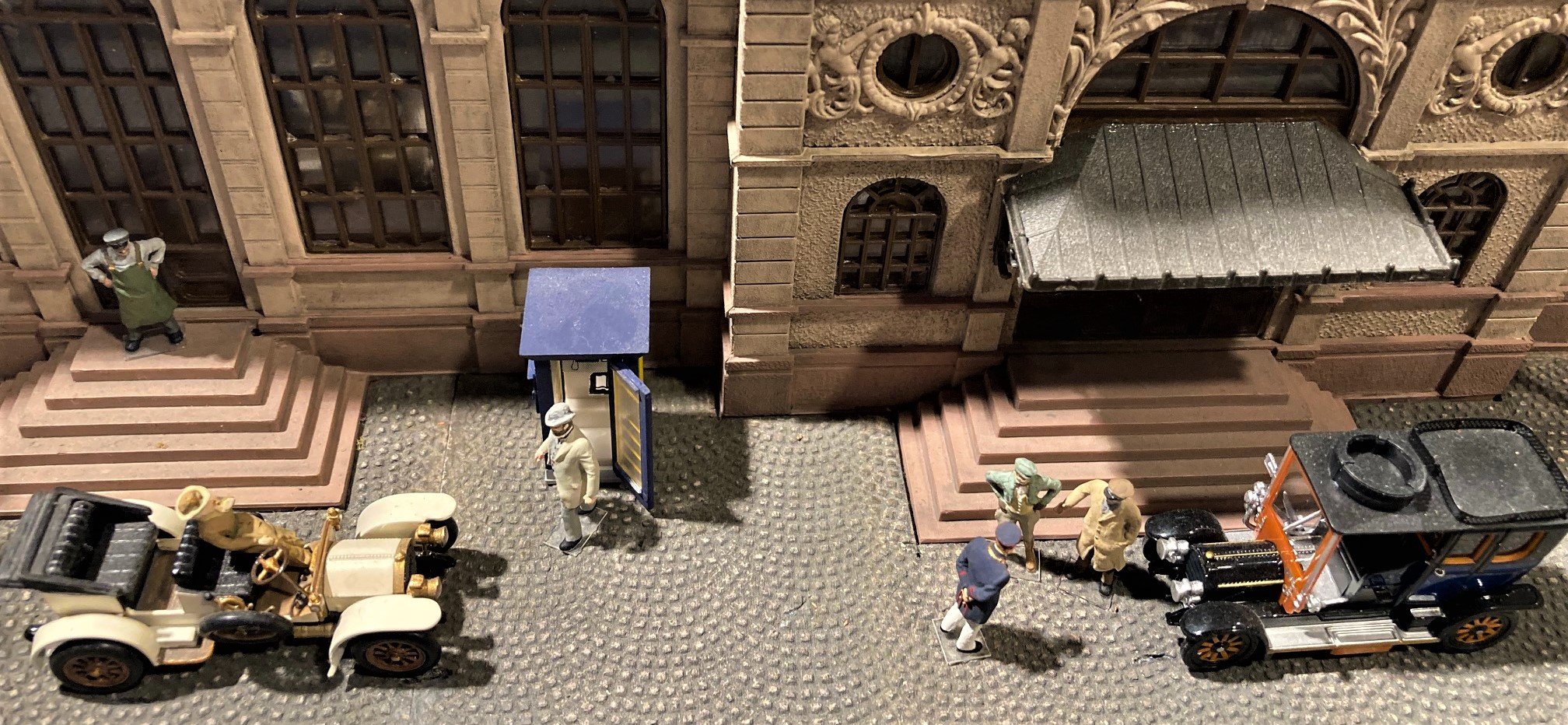
The Soul of The Collection:
Its Tiny People
From peasant to potentate
They represent every level of society – from peasant to potentate. They’re the ones who’ll fight and suffer through the next four-and-a-half years. Their aspirations are very much like yours and mine.
Paul Preiser’s company in Germany has been extremely successful in the production of HO scale figures in styrene plastic. The market is vast. His castings are hand painted in “standard” and “exclusive” finishes in various locations including Mauritius. Preiser faces, a couple of millimeters high – or less! – are all but impossible to believe when seen unpainted, so life-like are they. Of course the original sculptures are much larger, shrunk to HO - and other scales - once they’re approved for production.
Virtually all of the figures in The Collection have been extensively altered from the point-of-view of both sculpture and finish. I’ve carved several figures from tiny blocks of styrene plastic as though they might have been life-size sculptures. I’m fortunate to have a fine art degree that includes the study of anatomy as well as painting. But I’ve had to teach myself the art of “color-scaling” – the techniques involved in making a figure 15 millimeters high appear “real” not only in close-up but also at a distance of several feet or more. No paint can be used “straight-out-of-the-pot”; it all has to be “knocked back” no matter what the color. Yet the painting of a figure is easier than the sculptural changes required by virtually all HO scale figures straight out of the mold.
The study of history assists the creation of the figures in The Collection, though nothing helps more than life-long study of fashion – the clothes worn at all levels of society – for the lowliest jobs along with all the others. These are the people about to endure the horrors of the First World War. My intense focus has been to make them appear as real as I can, despite the obvious limitations imposed by HO scale.
The characters created by Herr Preiser and myself acquire “lives” that help to explain “who” they are and what they may endure in the war about to begin. These tiny personalities are a way of coming to terms with the immensity of the events that lie ahead of them. Their stories teach us to value the sacrifices of the millions of real people caught up in the horrors of the Great War and the wars fought since. In my own case, I’m haunted by the young man, driving his low-sided wagon, who will be killed on the sixth of November, in the final week of the war. There were many like him. It probably isn’t too much to say that these little people have assumed real meaning; that they’re a way of reminding ourselves that we all share the responsibility to try to avoid viewing war as the preferred means of resolving humanity’s disputes.




